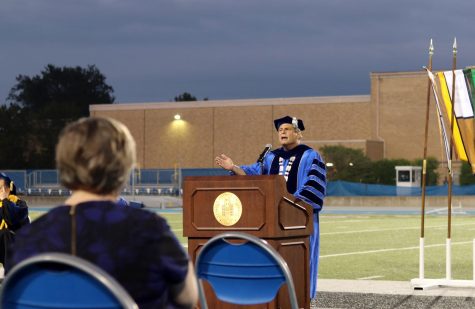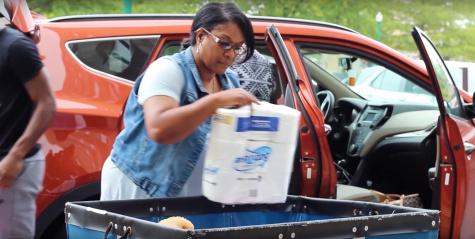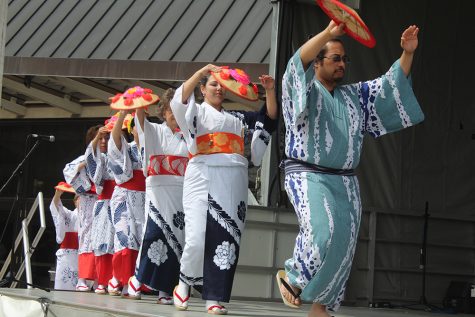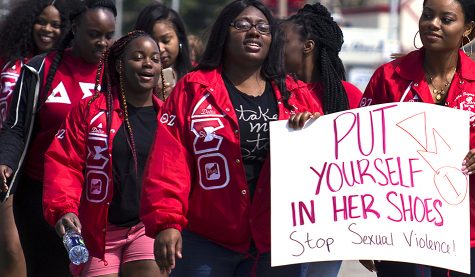Want job, won’t travel
A major issue facing teachers, not just in Illinois but nationwide, is a shortage of people available or willing to fill vacant education jobs.
According to the Educator Supply and Demand Report issued by the Illinois State Board of Education in 2000, 19,237, or 15 percent of the total 124,279 Illinois teachers were eligible to retire, while 11,352 teachers were hired.
Of the teachers hired in 2000, 6,655, or 59 percent, were first-time teachers.
“Right now, we still have over 2,000 jobs to fill in Illinois, but even in Texas they have over 10,000 jobs that went unfilled,” said Patricia Poulter, chair of the department of Student Teaching. “At any given time we could have up to a full quarter of our staff gone due to retirement,” she continued.
Attrition, or the rate at which educators leave their profession, was also cited by both Poulter and the ISBE as another problem adding to the high number of jobs left available.
According to the ISBE report, new-teacher attrition rates were on the rise with “nearly 7% of teachers [who] left education between school years 1999 and 2000.”
“We lose people in the first three years of teaching, which has less to do with student preparation than with the support they receive once they’re out there teaching,” Poulter said.
Andy Ehrlich, an Eastern student currently student teaching, said that he believes it is some students’ stubborn attitudes and unwillingness to leave the familiar that keeps them from finding jobs.
“Unless you’re willing to travel, you’ll run into problems,” Ehrlich said. “We need to be able to branch out. Students need to be prepared so that if plan A fails, you have a plan B.”
“I have back-up job possibilities from Champaign to Indianapolis and I have no problem moving around,” Ehrlich continued.
Poulter echoed Ehrlich’s concerns.
“The big problem is people are unwilling to go to high-need areas. When we think high need we tend to think of schools that are in decaying neighborhoods, but this happens with rural schools as well,” Poulter said. “Some of the top schools in the state, those with near 100 percent graduation rates, are in rural areas, but a lot of people are unwilling to move to smaller towns or into something that is out of their element.”
Poulter, however, feels that Eastern compensates for some students’ reluctance through its teacher education program.
“We try to give students as diverse experiences as possible; not just in terms of race, but with size of schools, socioeconomics, etc. We try to help them realize there is something beyond what they grew up with,” she said.
This year’s class of student teachers is projected to be one of the largest in recent history, according to numbers obtained from Eastern’s department of Student Teaching.
In the fall of 2005 and the spring of 2006, Eastern had enrolled 323 and 293 student teachers respectively, a total of 616 student teachers for the year.
For the fall of 2006, Eastern now has 313 student teachers enrolled, 10 less than last fall.
The amount of prospective student teachers for the spring of 2007; however, is up to 415 which could bring year’s total to 728 student teachers.
“We started the year with an estimated number of close to 800, but as the semester gets going, we get actual numbers: people don’t have the GPA, they don’t pass the appropriate tests, take a semester away from school, change majors; you get the picture. But we always have to prepare for the higher number and then adjust accordingly,” said Poulter
Compared to other Illinois universities, Eastern’s current enrollment for student teachers lies between that of Illinois State University and Western Illinois University.
Lynn Steffen, assistant director of Certification Processes and Data Collection, at Illinois State, said “We now have 356 student teachers for the fall 2006 semester, but this number is usually larger for the spring. Our student teaching graduates were lower last year, though.”
While not seeing a drop in graduates, Western is experiencing a drop in enrollment.
“There are 153 student teachers here for the fall and we have 201 expected to come in for the spring,” said Linda Tomlinson, director of the Center for Preparation of Education Professionals at Western.
Western predicts to have 354 student teachers this year. “We were higher in numbers before the teacher certification structure shifted in 2004. We usually averaged around 380 to 400 student teachers per year,” said Tomlinson.








































